Within a minute of leaving the truck, I regretted the extra layers I’d added at the last second. Sure, it was cold, but the snow was waist deep. The exertion of moving through the landscape warmed me up plenty. More than necessary, probably, since I felt my extra layers trapping too much moisture against my skin. But I wasn’t about to head back to the truck and change.
I stopped frequently, sucking in great gulps of air that didn’t quite fill my lungs. The air is thin at 10,000 feet above sea level, and it stabs your throat when the temperature drops past 20 degrees. Each exhalation clouded briefly before crystallizing on my beard.
I’m gonna quit drinking so much Mountain Dew, I thought, as we resumed walking. I’m gonna start going to the gym, too. I’m too damn fat for this.
Neither has happened, and it’s ironic that I have the willpower to fish the Rockies during the dead of winter but lack the gumption to stay in somewhat respectable shape.
Then I saw the creek and was immediately grateful for that last layer of Primaloft I pulled on beneath my waders. Up that high, the creek goes nowhere, slowly. Big pools wind around each other, with only the slightest current moving things along. Most of the pools were ringed with ice. Others were completely capped.
A trout rose, dimpling the river’s surface just long enough that I glimpsed its dark snout contrasting against the white snow.
My buddy Bridger huffed and puffed his way next to me. “See anything?” He wheezed.
I nodded, pointing at the rings still rippling from where the trout rose. “One just came up there.”
“What did it take?”
I shrugged. “I’m not sure. Probably a midge.”
“What’s that again?”
Bridger, like me, has fished his entire life. He’d only recently started frequently fly fishing, though, and our trips together consisted of great teaching moments for us both. I pulled a fly box from my vest and showed him a collection of small midge patterns – Griffiths gnats, parachutes, spent-wings. The standard go-to flies for the Rockies.
“They’ll really eat those tiny things?” Bridger asked.
“Yup.”
We fished together, trading off who got to cast first to a given pool. Whoever wasn’t fishing got to clean ice from their rod guides. It was a quiet, methodical rhythm we’d developed over years of fishing together, but this was the first time I’d convinced Bridger to get out in the dead of winter. He was a self-described fair-weather fisherman.
I hoped some winter midges would change that.
An hour after getting to the creek, we rounded a bend and saw fish rising steadily against the far bank. They didn’t look big, but they were the first active fish we’d found all day. I deferred to Bridger, insisting he take the first few casts.
“I get to fish this creek all the time,” I said. While not an outright lie, it was more a half-truth. The creek is out of the way for us both. What I wanted was for Bridger to discover the same magic I’d found years ago.
“Tuck it right against the bank,” I said. “On the foam. Don’t let it drag.”
Bridger took the coaching in stride. His first cast was short and to the left of the foam line. So was the second. On the third cast, though, he drifted a size 22 parachute midge right through the rising trout’s kitchen.
The fish rose slowly, every movement exaggerated as though we were watching a fly fishing film. I turned to tell Bridger to set the hook, but he beat me to it. His line was already taut, singing in the cold air. Flecks of ice flew off, glinting in the flat white light of midafternoon. The 13-inch brown gave a good fight, its butter-yellow flanks seemingly more brilliant than usual against the drab gray and white of winter.
We each caught a few more that day – all on midges, and nothing bigger than the first fish Bridger landed. For December, at 10,000 feet, it was a phenomenal day. But I didn’t know if it was enough to keep Bridger around as my permanent winter fishing partner.
So, the next week, I convinced him to spend the afternoon with me on the Lower Provo River. It’s a different fishery than the creek we’d fished the week before. The Provo is a medium-sized river, with plenty of fish over 20 inches. More importantly, it’s at a lower elevation, which means warmer temps and better midge hatches.
That afternoon the wind howled off Deer Creek Dam, which made fishing difficult, but not impossible. The biting cold was most bothersome. Between wind gusts, though, fish rose hungrily to the piles of buffalo midges that blew off the snowy banks and into the river. I pointed the rises out to Bridger. The trout were subtle, eating the bugs in the surface film, showing only their backs and tails.
Multiple current seams tugged at Bridger’s line while he struggled against the wind and bigger water to get a decent drift. Fish rose around his flies, but not on it. Tense minutes passed while he tried to get the right drift, and I wondered when – if at all – to interject with some tips.
Then we both gasped at the same time when a fish rose 20 feet upstream from where we stood. It rolled on something in the surface film, showing off most of its orange-red belly. It was the biggest fish I’d seen on the Provo in months.
I wanted to make the cast, but I knew if Bridger caught that fish, he’d finally understand why I willingly freeze all winter long, just for a few hours of fishing midges to rising trout.
“Don’t overthink it,” I said. “Just make sure your fly doesn’t drag.”
The first cast yielded nothing. It was a good cast, too. Then the second cast landed, perfectly in line with where the fish had risen.
It came up and rolled on Bridger’s line. I yelled for him to set the hook, his line went tight, and we both got a good look at the side of a big brown trout – over 20 inches without a doubt.
Then the line went slack, and the disappointing crack of broken tippet brought us down to reality. Bridger had set the hook a half-second too early. It’s an easy mistake, one I’ve made hundreds of times, and will continue to make. But he’d had the fish on long enough to feel its heft, to see its size.
It turns out, that was enough to hook him. The next week he texted me, “When are we throwing midges to big risers again?”





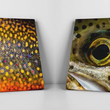










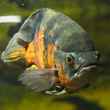



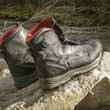




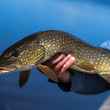
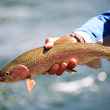

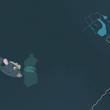

Comments